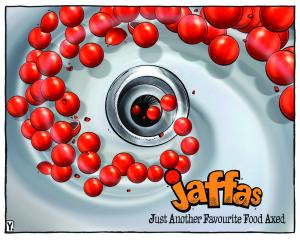Roads through the Hollyford and Greenstone Valleys would make New Zealand so much more interesting, writes Joss Miller.
At the head of Lake Wakatipu lies the road to Paradise, immediately conjuring up images of a utopian destination.
However, the arrival at Paradise is somewhat anticlimactic with little evidence of development or habitation.
Beyond Paradise are many imposing mountains and sparkling river flats, with Milford Sound but a short distance to the west as the crow flies.
No road access exists connecting Glenorchy and Paradise to the Milford road.
Many different proposals, including a tunnel, have been advanced over the years, but one by one these have all been rejected.
Other schemes, such as ''Project Hayes'' in Otago, have also been stymied thus delivering a severe blow to the entrepreneurial spirit.
The late Tommy Thomson, who farmed at Mount Earnslaw Station at the head of Lake Wakatipu, was a strong and compelling advocate over many years in promoting a road through the Greenstone and Hollyford Valleys.
His efforts in the 1940s and 1950s were instrumental in persuading the authorities of the necessity for a road from Queenstown to Glenorchy.
This road eventually opened in 1962 and has proven to be highly beneficial to the whole of this region.
One of the South Island's last great road projects was the Haast Pass, completed in 1966 and providing a magnificent link between Westland and Otago.
Sure, there are and will continue to be some maintenance issues, but it is difficult to see how it can plausibly be advanced that this road has caused degradation to the environment.
Foliage rapidly regenerated at the sides of the road following construction and camp sites are appropriately monitored and maintained.
Likewise in the vastness of Fiordland, it is difficult to see how a further road linking Glenorchy to the Milford road would have other than minimal environmental impact.
What it is more likely to do is provide a splendid access way for New Zealanders and tourists and enable many more people to enjoy a brief wilderness experience.
Importantly, from a practical point of view, it would reduce the current travel time from Queenstown to Milford Sound by half.
Momentum has been building recently on the West Coast for a road through the Hollyford Valley to link with the Milford road.
It is understood the Hollyford Valley already has a substantial legal road reserve.
If developed, this would be a toll road and provide New Zealanders and others with a rare opportunity to see and enjoy a relatively isolated part of New Zealand.
This proposal is also likely to face a strident chorus of opposition.
One might well ask why there is such negativity towards these road proposals or alternative access way proposals no matter how reasonable or rational they might be.
Understandably, a variety of opinions and factors need to be weighed, but included in that has to be an appreciation of the positive and enduring benefits these developments would have for New Zealand - something which cannot be continually ignored.
Hopefully, one day there will be a road beyond Glenorchy and Paradise connecting the Te Anau-Milford road and also a road through the Hollyford Valley.
These roads will create relatively small indentations amid the enormity of the Fiordland landscape.
Not everyone is capable of tramping, biking or fishing in remote spots.
Our country will still be as green and as clean as it can be but so much more interesting.
• Joss Miller is a Dunedin lawyer.











